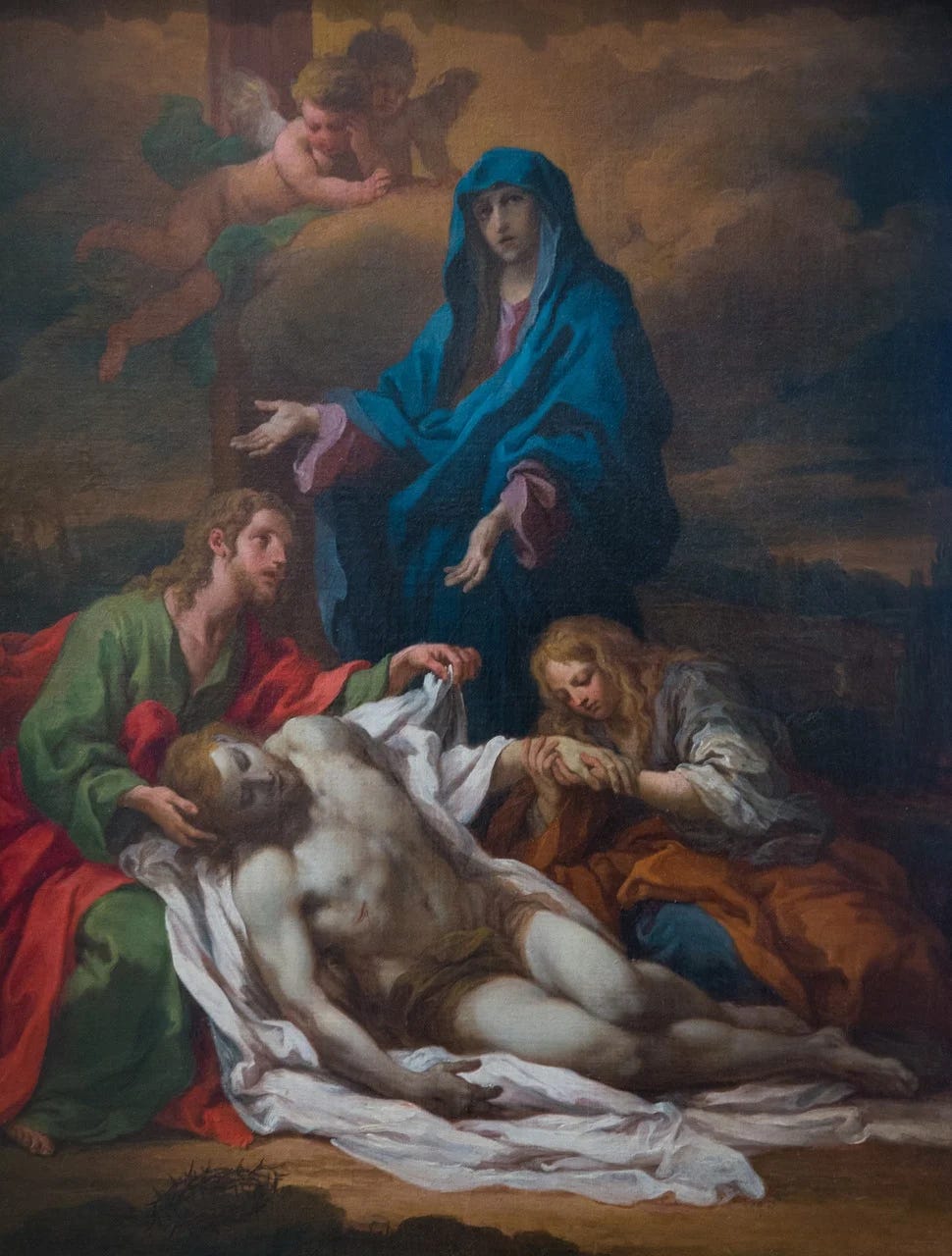From Savior to Sinner: The Evolution of Mary Magdalene in History
As a writer and a feminist, the stories of powerful women in history has always fascinated me. One of the most intriguing figures is Mary Magdalene. Over the centuries, a variety of cultural, religious, and political forces have shaped her image and legacy. In this blog post, I will explore the evolution of Mary Magdalene's image from a pivotal figure in the Bible to a vilified sinner to a feminist icon.
Introduction to Mary Magdalene
Mary Magdalene is a prominent figure in the New Testament of the Bible. All four Gospels mention that Mary Magdalene was present during Jesus Christ's crucifixion and resurrection. According to the Bible, she was a follower of Jesus and was the first person to witness his resurrection. However, beyond these basic facts, there is much debate and speculation about who Mary Magdalene was and what role she played in early Christianity. The portrayal of Mary is similar in all the Gospels, even though there are some discrepancies. (De Boer, 2004).
Mary Magdalene in the Bible
The Bible depicts Mary Magdalene as a devoted and trustworthy follower of Jesus. The Bible frequently mentions Mary Magdalene, along with Joanna, Susanna, and Mary (mother of James), for their support of Jesus and his ministry. Scholars speculate that Mary Magdalene, mentioned in the Gospel of Luke, might have had a mental illness or another affliction, as Jesus cured of "seven demons".
One of the most significant moments in Mary Magdalene's story is her discovery of the empty tomb of Jesus. According to the Gospel of John, Mary Magdalene went to the tomb early on the first day of the week and observed that the stone had been rolled away. She ran to tell Peter and another disciple, who came and saw the empty tomb for themselves. Later, when Mary Magdalene returned to the tomb, she saw two angels who asked her why she was crying. When she turned around, she saw Jesus, but she did not recognize him at first. It was only when he called her by name that she realized who he was.
Despite the Gospel's portrayal of Mary being important to Jesus’ ministry, the patriarchal culture and patriarchal interpretations have dismissed Mary. She is understood as a minor character.
Mary Magdalene in Early Christian Traditions and Pagan Traditions
After the death of Jesus, Mary Magdalene continued to play an important role in the early Christian church. According to some traditions, she traveled to Rome and preached the gospel to the emperor Tiberius. Other accounts suggest that she lived as a hermit in the desert, engaging in intense prayer and contemplation.
Mary was not written about by most Early Christian Fathers and those who mention her, only do so briefly (Schaberg 2004). Those who mentioned her both pagan and Christian scholars did not have anything good to say about her. The pagan philosopher Celsius stated that Mary was just a hysterical woman (Schaberg, 2004). Celsius also adds that some Christians followed a woman named Mariamme who the Christian philosopher Origen dismisses ( Schaberg 2004).
As the Christian church grew and evolved, Mary Magdalene's image began to change. In the 4th century, Pope Gregory the Great gave a sermon in which he conflated Mary Magdalene with a woman who is described in the Bible as a "sinner" who anointed Jesus with expensive perfume. This led to the widespread belief that Mary Magdalene was a prostitute or a fallen woman, despite the lack of evidence to support this claim. Many early church fathers such as Gregory of Nyssa interpret her as a prostitute but others such as Augustine of Hippo and Ambrose didn’t conflate her to be a prostitute ( Haskins 2005).
The Evolution of Mary Magdalene in Medieval Times
In the Middle Ages, Mary Magdalene's image continued to be shaped by religious and cultural forces. She was often depicted in art as a repentant sinner, with long hair and a jar of ointment. In some depictions, she was shown weeping at the feet of Jesus, while in others she was shown being tempted by demons.
During this time, Mary Magdalene also became associated with a few legends and myths. Some stories claimed that she had traveled to France after the crucifixion and had founded a community of Christian women there and it was said she is buried in France. Other stories claimed that she had been miraculously transported to heaven or that she had been martyred for her faith ( Witcombe 2002).
Mary Magdalene in the Renaissance Era
In the Renaissance, Mary Magdalene's image began to shift again. Artists such as Leonardo da Vinci and Titian portrayed her as a beautiful and virtuous woman, in contrast to the earlier depictions of her as a repentant sinner ( Ehrman 2005). She was often shown with long, flowing hair and delicate features, and she was sometimes depicted as a companion of the Virgin Mary.
At the same time, Mary Magdalene's association with prostitution and sin continued to be perpetuated in popular culture. The English playwright William Shakespeare, for example, included a character named "Mary Magdalene" in his play "Measure for Measure," who is described as a brothel owner.
Mary Magdalene in Modern Times
In the modern era, Mary Magdalene's image has undergone yet another transformation. In the 20th century, feminist scholars began to reclaim her legacy and argue that the vilification of Mary Magdalene was part of a broader pattern of misogyny in religious and cultural traditions.
Today, Mary Magdalene is often seen as a feminist icon and a symbol of female empowerment. She is celebrated for her courage, her devotion, and her unwavering loyalty to Jesus. She is also seen as a model for women who seek to challenge patriarchal structures and advocate for social justice.
Debunking Myths About Mary Magdalene
Despite the efforts of feminists and scholars to reclaim Mary Magdalene's legacy, there are still many myths and misconceptions about her that persist. One of the most common is the idea that she was a prostitute or a fallen woman. As we have seen, there is no evidence to support this claim, and it was likely a later invention designed to discredit her as a spiritual authority.
Another myth about Mary Magdalene is that she was Jesus' wife or lover. While this idea has been popularized in recent years by books such as "The Da Vinci Code," there is no historical evidence to support it. In fact, the Gospels make no mention of any romantic relationship between Mary Magdalene and Jesus.
Reclaiming Mary Magdalene's Legacy
Despite the many myths and misconceptions that have been perpetuated about Mary Magdalene over the centuries, her legacy remains a powerful symbol of faith, devotion, and female empowerment. By reclaiming her image and telling her story in new and innovative ways, we can honor her memory and continue to inspire future generations of women.
One way to do this is to explore the many artistic and cultural representations of Mary Magdalene that exist. From paintings and sculptures to plays and films, there are countless examples of how she has been depicted over the centuries. By examining these works of art, we can gain a deeper understanding of how Mary Magdalene's image has evolved.
Another way to reclaim Mary Magdalene's legacy is to challenge the patriarchal structures and power imbalances that have historically marginalized women in religious and cultural traditions. By advocating for women's rights and promoting gender equality, we can honor Mary Magdalene's memory and continue her legacy of courage and empowerment.
Conclusion
Mary Magdalene is a complex and multifaceted figure whose image has been shaped by a variety of cultural, religious, and political forces over the centuries. From her portrayal as a loyal disciple in the Bible to her vilification as a sinner and prostitute in later traditions, her story is a testament to the power of myth and the enduring legacy of women in history.
By reclaiming Mary Magdalene's legacy and challenging the myths and misconceptions that have been perpetuated about her, we can honor her memory and continue to inspire future generations of women. Whether through art, activism, or scholarship, we can all play a part in keeping her story alive and celebrating her contributions to the history of faith, devotion, and female empowerment.
References
Ehrman, Bart D. (2006), Peter, Paul, and Mary Magdalene: The Followers of Jesus in History and Legend, Oxford, England: Oxford University Pr
De Boer. E. 2004. The Gospel of Mary. Continuum: London.
Haskins, Susan (2005). Mary Magdalen: Myth and Metaphor. Pimlico
Schaberg, Jane. 2004. The Resurrection of Mary Magdalene: Legends, Apocrypha, and the Christian Testament. The Continuum International Publishing Group Inc: New York
Witcombe, Christopher L. C. E. (June 2002), "The Chapel of the Courtesan and the Quarrel of the Magdalens", The Art Bulletin, 84 (2): 273–292, doi:10.2307/3177269, JSTOR 3177269
All images are from Pixabay.com






